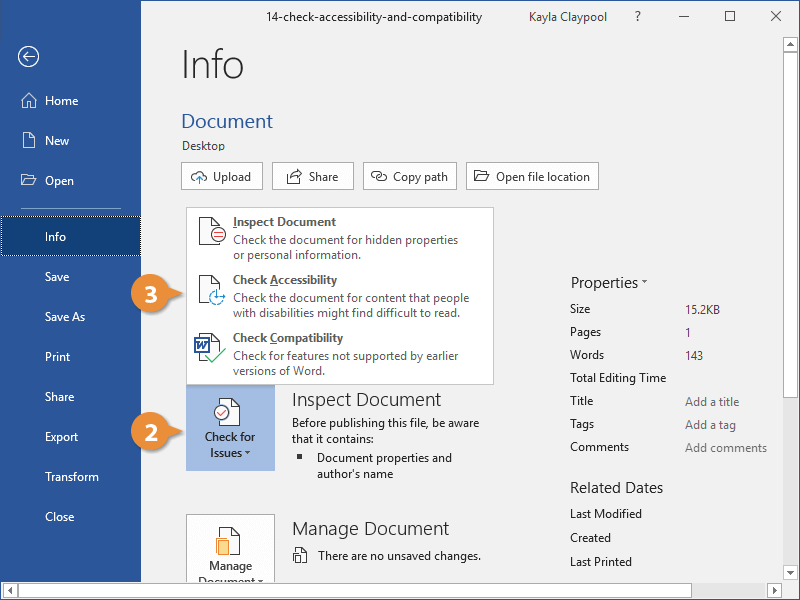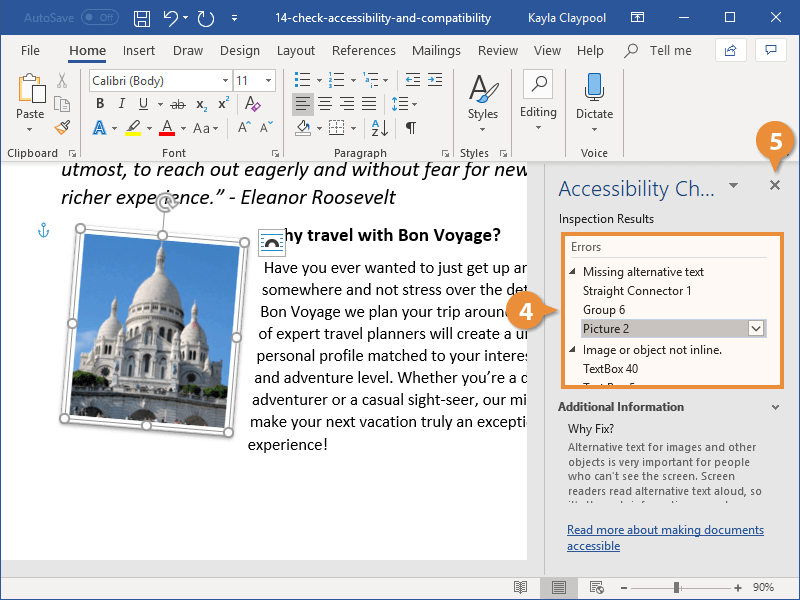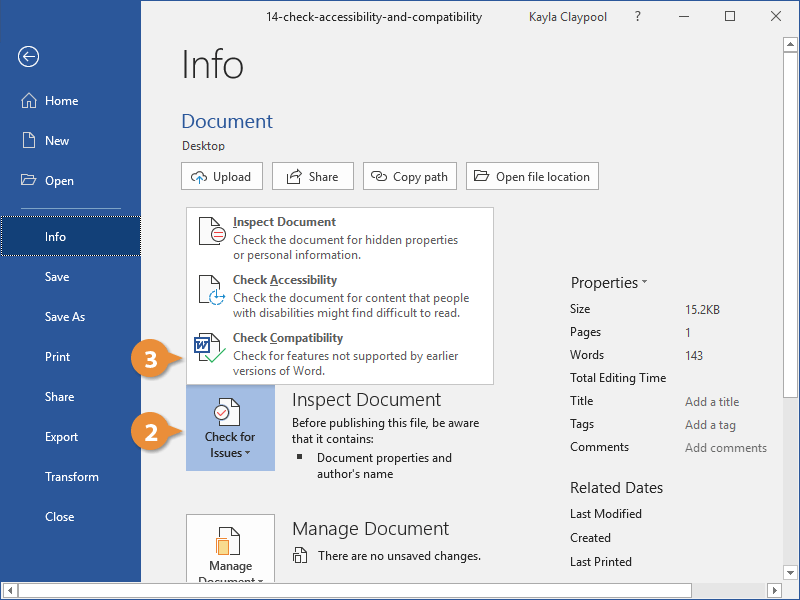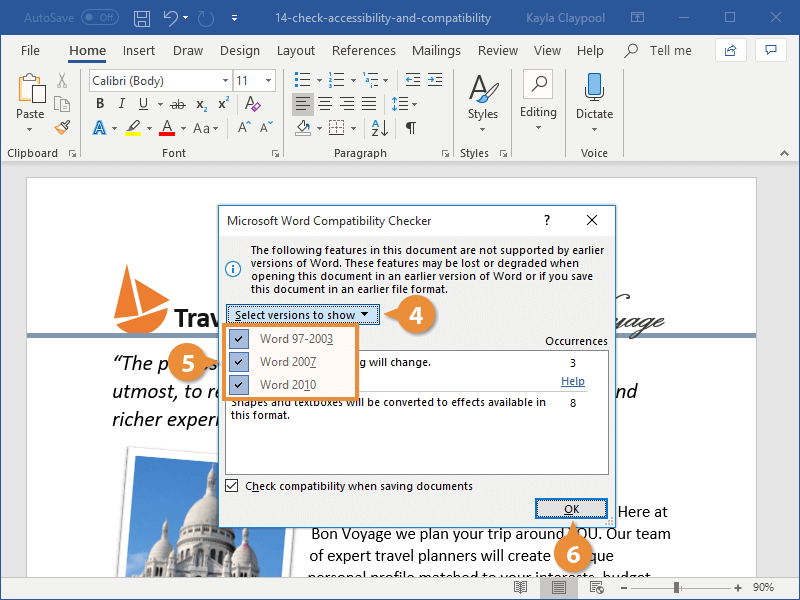If your document has a lot of advanced effects, graphics, tables, or videos, you may run into trouble opening it in older versions of Word. It may also be difficult for people with disabilities to read. Word can automatically check your document to find potential compatibility and accessibility problems.
The accessibility checker examines your document for anything that would make it difficult for people with disabilities to read.
- Click the File tab.
- Click the Check for Issues button.
- Select Check Accessibility.
The Accessibility pane appears on the right, listing anything in the document that would make it less accessible.
Some common problems include the lack of alternative text on images or meaningful hyperlink text, color-coding without additional context, and headings that aren’t in a logical order for a screen reader to parse.
- Select a result.
Additional information appears underneath the results, letting you know why this result is a problem and how to fix it.
- Click the Close button when you’ve finished looking over the results and have made the appropriate changes.
You can also check a document for compatibility problems with previous versions of Word.
- Click the File tab.
- Click the Check for Issues button.
- Select Check Compatibility.
The Compatibility Checker window appears, listing anything in the document that’s not compatible with earlier versions of Word.
- Click the Select versions to show button.
- Toggle which versions of Word to check compatibility for.
By turning off the versions of Word that you don’t need to worry about, you can get a better sense of what incompatibilities are important to you.
- Click OK.
The window closes, and now you have a better idea of accessibility issues and incompatibilities in your document.






